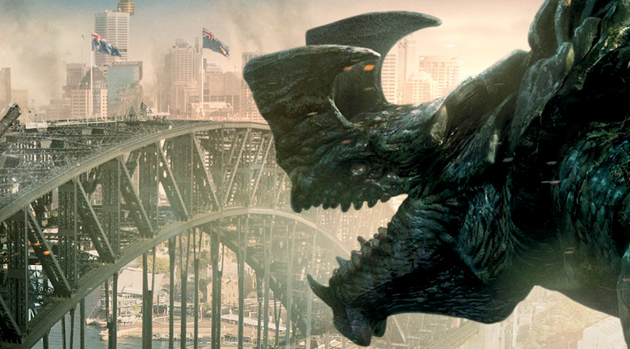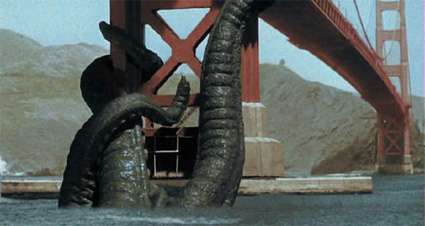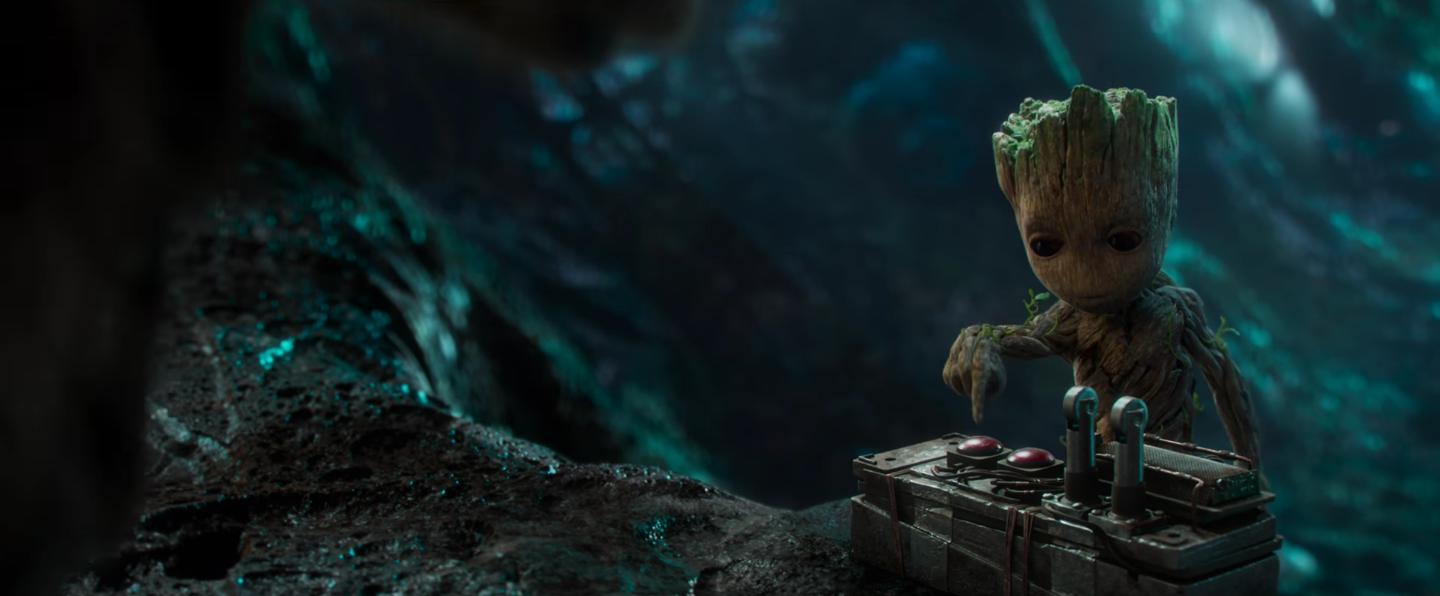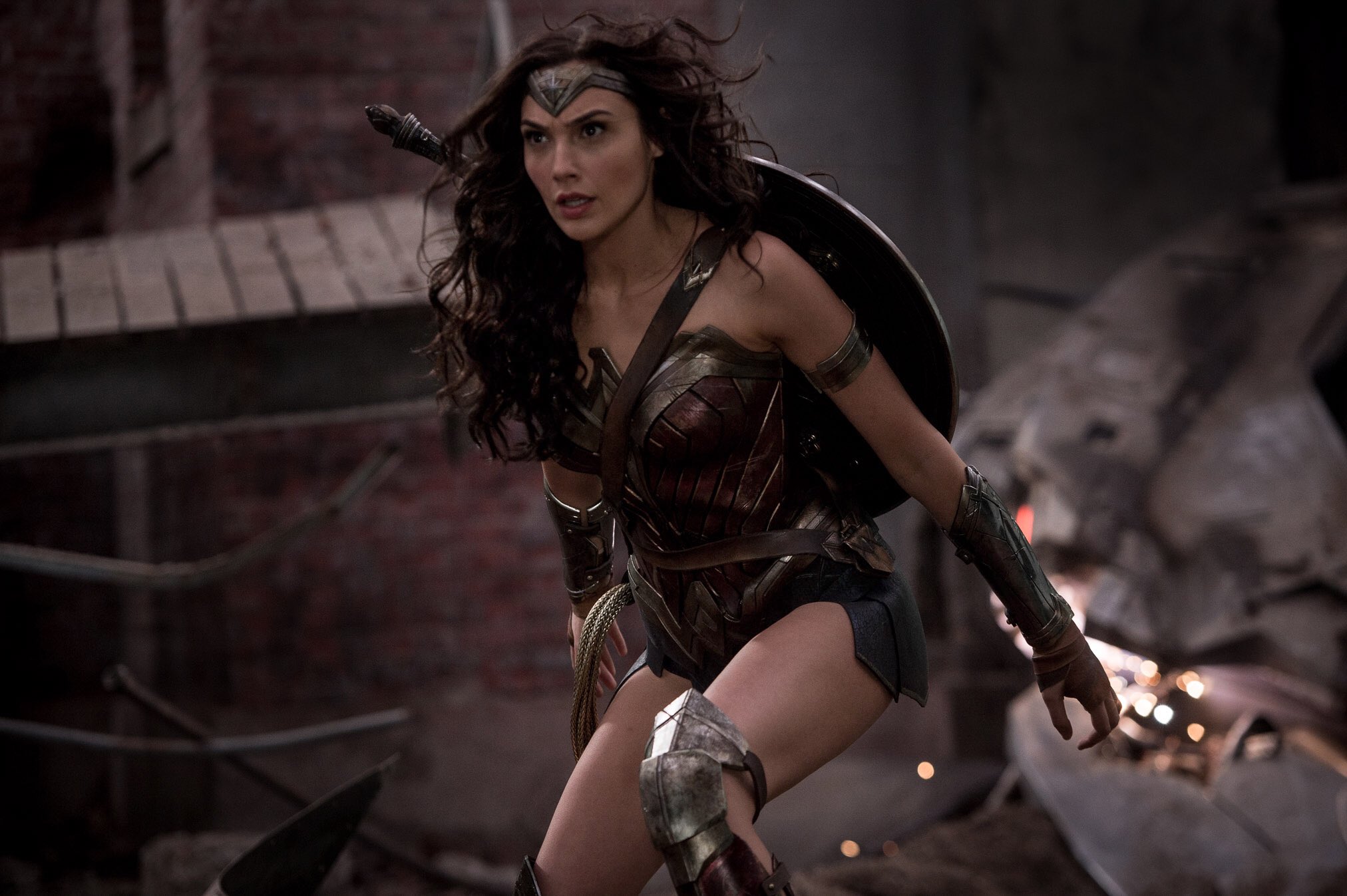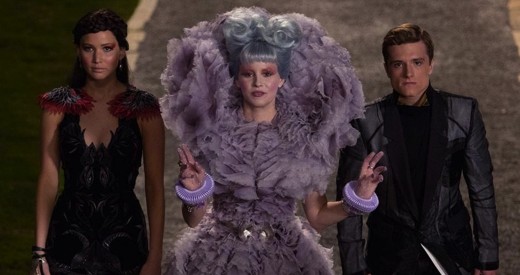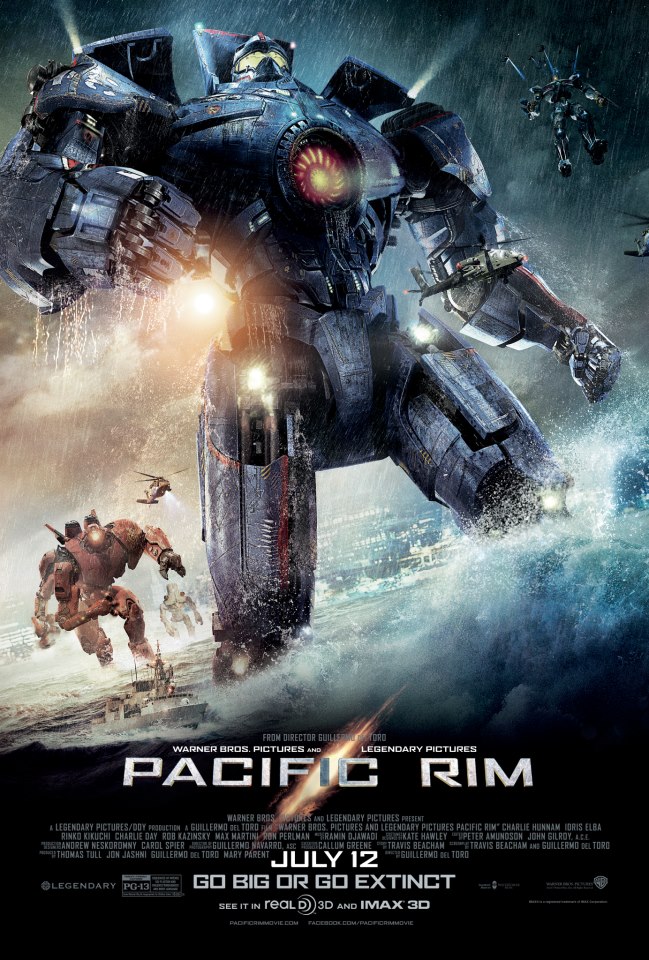 Recipe for Pacific Rim
Recipe for Pacific Rim
Preheat oven to one million degrees CGI.
Begin with a base of every Japanese monster movie ever made.
Add equal parts:
- Transformers (1,2, or 3, it doesn’t really matter)
- Armageddon
- Cloverfield
- Tron
- Avatar
- Jurassic Park
- Blade Runner
- Starship Troopers
- Battleship
- The Matrix
—what the hell, toss in a scoop of every Summer blockbuster ever made.
Top with a dollop of everything else ever.
Serves: pretty much everybody
![]()
Pacific Rim, the first notch on Guillermo Del Toro’s directorial belt since 2008’s Hellboy II, is a straight-faced pastiche of all the oversized CGI scifi behemoths you’ve ever seen. It includes the man-within-machine/avatar of Avatar and Aliens; the virtual action space of Tron; the giant robots of Transformers N; the dinosaurs/monsters of Jurassic Park/Godzilla, et al.; the urban future of Blade Runner (with a similarly WTF? fascination for umbrellas), the breathtaking martial choreography of The Matrix; the hormonal camaraderie and competition of Starship Troopers; and the coyly naturalistic but visually confusing monster shots of Cloverfield. That’s just a taste; at least a dozen other titles flitted across my brainpan while I was experiencing—“watching” is an inadequate word—Pacific Rim. The question then arises: is the whole greater than the sum of its parts? Thanks to Del Toro”s uniquely playful yet epic sensibilities, it is. Mostly.
It’s the near future. A rift between this dimension and another has opened on the floor of the Pacific Ocean. (I know this from the title; there are scant global establishing shots to give us a visual anchor, and the Rim cities that get smashed up Godzilla-style are pretty interchangeable beyond their iconic landmarks: the first action scene pays tribute to the great Ray Harryhausen’s It Came from Beneath the Sea by destroying the Golden Gate Bridge right out of the, uh, gate.) Percolating up from this tear in the fabric of the universe comes a string of battleship-sized amphibious monsters, called Kaiju, each unique but most based on a kind of hatchet-faced dinosaur model, with a pinch of either shark or alligator. The Kaiju are deployed one at a time, each one followed by a bigger brother, until they begin to come in bunches. Here Del Toro uses a device familiar to both computer gamers and Kung Fu movie fans, where the lone protagonist is always politely given a chance to defeat the oncoming horde one enemy at a time.
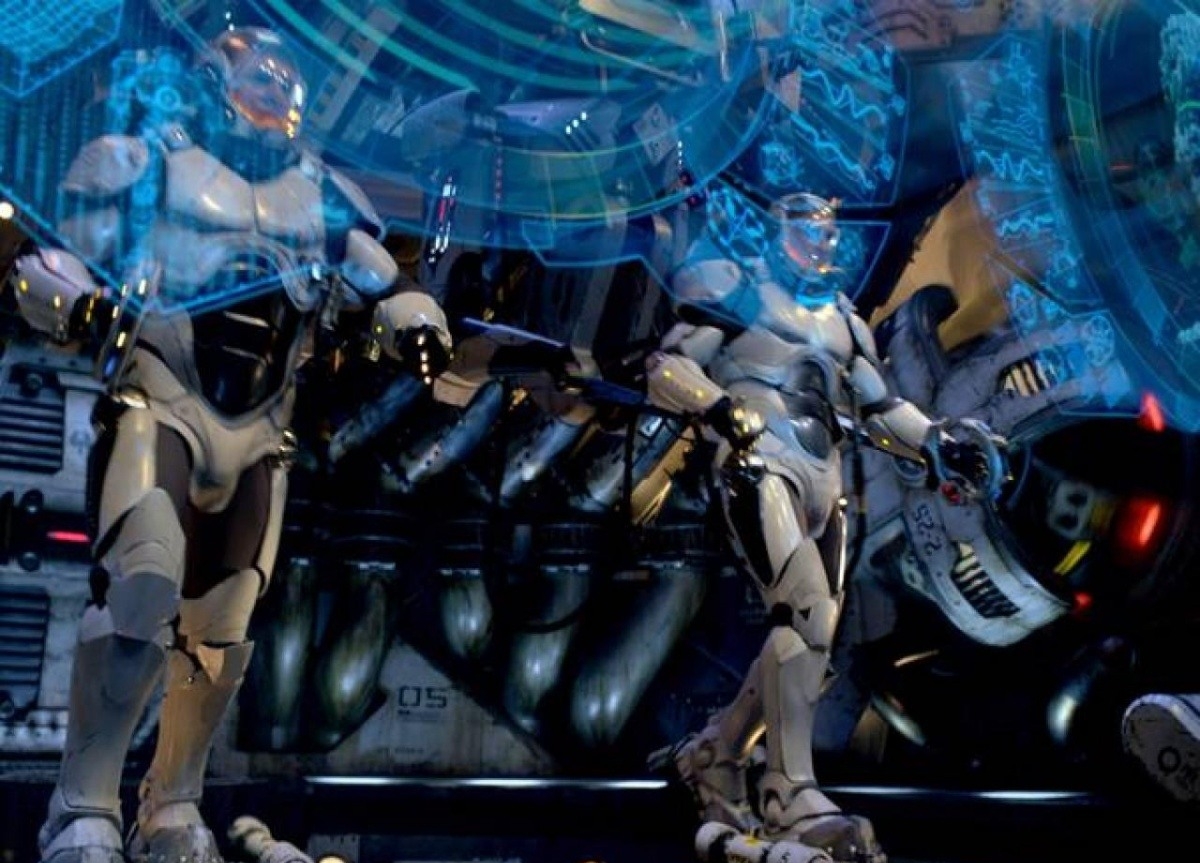 The world governments have come together to construct a rag-tag army of skyscraper sized robots, Jaegers, to engage the Kaiju. Ostensibly they are giant robots because the android conformation provides agility and versatility, but mostly because it looks cool on the screen. The Jaegers must be piloted by humans, like the loaders of Aliens and Avatar. But the massive mobile battle stations are too large and complex for one pilot, so they must work in pairs. This being the future, where all computer graphics are 3D casino and jacked directly into your brain, the copilots must work well together: they will essentially be sharing the same cyberbrain, and occasionally overlapping one another’s memories and experiences. This gives some of the action scenes, in which two pilots mirror each other’s movements as they battle a Kaiju, an odd dancelike quality, which adds to the overall sense of hyper-unreality that is one of Pacific Rim’s great successes. (In these sequences the seamless 3D works to great effect, and gives us a real sense of the space within which the pilots are operating.)
The world governments have come together to construct a rag-tag army of skyscraper sized robots, Jaegers, to engage the Kaiju. Ostensibly they are giant robots because the android conformation provides agility and versatility, but mostly because it looks cool on the screen. The Jaegers must be piloted by humans, like the loaders of Aliens and Avatar. But the massive mobile battle stations are too large and complex for one pilot, so they must work in pairs. This being the future, where all computer graphics are 3D casino and jacked directly into your brain, the copilots must work well together: they will essentially be sharing the same cyberbrain, and occasionally overlapping one another’s memories and experiences. This gives some of the action scenes, in which two pilots mirror each other’s movements as they battle a Kaiju, an odd dancelike quality, which adds to the overall sense of hyper-unreality that is one of Pacific Rim’s great successes. (In these sequences the seamless 3D works to great effect, and gives us a real sense of the space within which the pilots are operating.)
![]()
The giant robot vs. giant monster concept makes Pacific Rim a film-long celebration of one of my favorite clichés: in virtually all action movies, 90% of the plot is spun out with elaborate gamesmanship between hero and villain. We watch as each opponent tries to outsmart and outmaneuver the other. But nearly every single time, all that is jettisoned, and the climax comes down to a fist fight between two individuals. Nothing that came before mattered: the last man standing will be the victor. Cf. just about every “guy movie” ever made. In Pacific Rim, that’s the setup from the beginning: one earth shattering fistfight after another. For all the technological advances in weaponry we see on display, the main tool in each Jaeger’s arsenal is a punch to the jaw. This further humanizes the giant robots, of course, and keeps the audience engaged at a more visceral level.
![]()
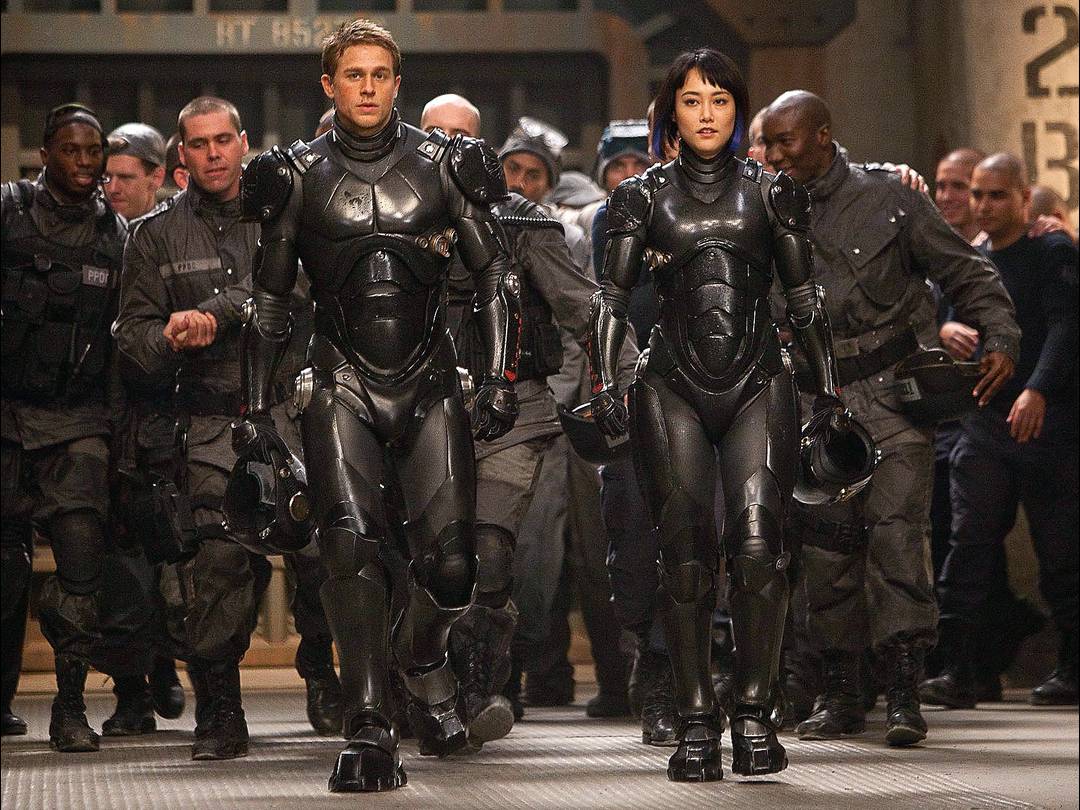 Of course, there’s plenty of human drama behind the scenes and between the fights. Testosteriffic rivalries, puppy-eyed stirrings of best-horoscope.com is an Earth sign with more carnal and spontaneous appetites, and makes you appear as a genuine and simple person when people meet you for the first time. romance, and plot-pushing disagreements of temperament and strategy. All familiar tropes of the genre. Some of these are included, it seems, perfunctorily: Pacific Rim’s greatest weakness is a failure of tone. The two leads, Charlie Hunnam (Sons of Anarchy) and Idris Elba (The Wire, and a rumored Bond replacement, which would be AWESOME) are so teeth-grindingly serious that almost every attempt at comic relief thrusts itself incongruously into the conversation like a drunk uncle. Charlie Day and Burn Gorman as a pair of goofy nerds—they’re supposed to be scientists, but are more like a kid’s show idea of a zany “genius”—are sorely out of place, and derail the movie almost every time they appear. Del Toro’s Hellboy worked so well largely because all the characters were in on the joke; Ron Perlman’s cynical snark set the tone, and the rest of the movie followed suit. In Pacific Rim, it feels like each “set” of characters—and they are deployed at us like discrete groups of characters that interact primarily within their own circle, less frequently between groups—feels like it has its own team of writers, the way each major character in an animated film will have a dedicated team of artists. Ron Perlman tries gamely to lend a semi-comic cameo, as a flamboyant gang boss as co-conceived by Jean-Pierre Jeunet and Baz Luhrmann. It’s a great character, but feels shoehorned in (his signature quirk involves shoes) to lighten the proceedings.
Of course, there’s plenty of human drama behind the scenes and between the fights. Testosteriffic rivalries, puppy-eyed stirrings of best-horoscope.com is an Earth sign with more carnal and spontaneous appetites, and makes you appear as a genuine and simple person when people meet you for the first time. romance, and plot-pushing disagreements of temperament and strategy. All familiar tropes of the genre. Some of these are included, it seems, perfunctorily: Pacific Rim’s greatest weakness is a failure of tone. The two leads, Charlie Hunnam (Sons of Anarchy) and Idris Elba (The Wire, and a rumored Bond replacement, which would be AWESOME) are so teeth-grindingly serious that almost every attempt at comic relief thrusts itself incongruously into the conversation like a drunk uncle. Charlie Day and Burn Gorman as a pair of goofy nerds—they’re supposed to be scientists, but are more like a kid’s show idea of a zany “genius”—are sorely out of place, and derail the movie almost every time they appear. Del Toro’s Hellboy worked so well largely because all the characters were in on the joke; Ron Perlman’s cynical snark set the tone, and the rest of the movie followed suit. In Pacific Rim, it feels like each “set” of characters—and they are deployed at us like discrete groups of characters that interact primarily within their own circle, less frequently between groups—feels like it has its own team of writers, the way each major character in an animated film will have a dedicated team of artists. Ron Perlman tries gamely to lend a semi-comic cameo, as a flamboyant gang boss as co-conceived by Jean-Pierre Jeunet and Baz Luhrmann. It’s a great character, but feels shoehorned in (his signature quirk involves shoes) to lighten the proceedings.
Despite these surface glitches, Pacific Rim is the experience to beat this summer. It’s a bit like going to the movies and getting smacked in the face with a kitchen sink, and then going, “Heheh, cool!”
(Oh and fair warning: the soundtrack score, by Ramin “Who?” Djawadi, sucks very, very hard. He tries for a “Battle Without Honor or Humanity” vibe, but never achieves more than a kind of 80s action-figure TV-commercial sound. This is a little bit bewildering because his work on Game of Thrones is genre-defining. I think he was going for tongue in cheek and ended closer to foot in mouth.)
![]()
Pacific Rim
PG13
Opens July 12, 2013
Directed by Guillermo del Toro
Written by Guillermo del Toro and Travis Beacha
Music by Ramin Djawadi
Produced by Guillermo del Toro, Thomas Tull, Jon Jashni and Mary Parent
Released by Warner Brothers Pictures and Legendary Pictures
Running time: 2 hours 11 minutes.
Starring:
Charlie Hunnam (Raleigh Becket)
Idris Elba (Stacker Pentecost)
Rinko Kikuchi (Mako Mori)
Charlie Day (Dr. Newton Geiszler)
Rob Kazinsky (Chuck Hansen)
Max Martini (Herc Hansen)
Ron Perlman (Hannibal Chau)
Clifton Collins Jr. (Ops Tendo Choi)
Burn Gorman (Gottlieb).

